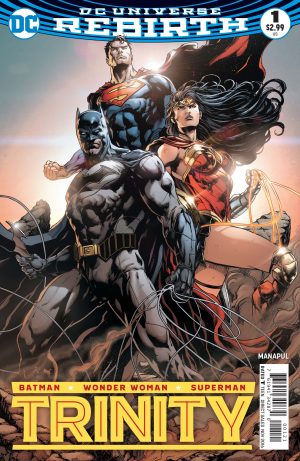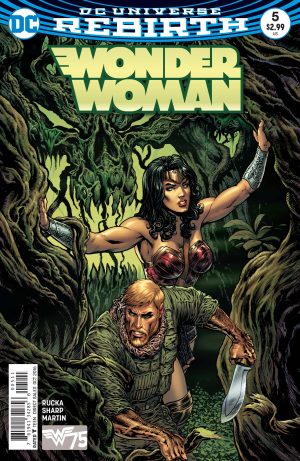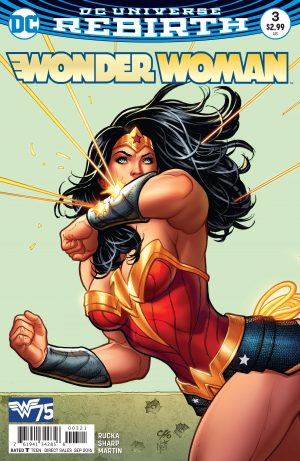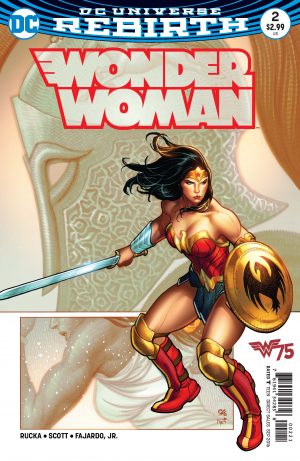To say people in attendance and on the internet were hyped upon viewing the Wonder Woman trailer at Comic Con this year would be quite the understatement. Considering many viewed the character, portrayed by Gal Gadot, a standout in Batman V. Superman: Dawn of Justice, it comes as no surprise the trailer would be welcomed with a large amount of adoration.
But you’re here because you read comics, and as a fellow comic fan, I can tell you, pleasing comic fans is no easy feat. That’s especially true when dealing with a character as iconic as Wonder 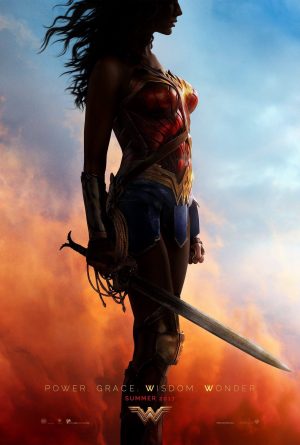 Woman, who celebrates her 75th anniversary this year. Many takes on Diana both in the long and short-run have graced media, and as such there are various interpretations of the character that can be seen as the “true Wonder Woman,” depending on who asks.
Woman, who celebrates her 75th anniversary this year. Many takes on Diana both in the long and short-run have graced media, and as such there are various interpretations of the character that can be seen as the “true Wonder Woman,” depending on who asks.
The DCEU, headed by the likes of Zack Snyder & Geoff Johns, has already come under some criticism for the take on Diana that looks to be taking center stage in both her upcoming film and as a member of the Justice League. Particularly, some are questioning the use of Diana's Sword and Shield along with/in lieu of her more traditional bracelets and Lasso of Truth.
The concerns stem from the idea that it strays far from the roots of Wonder Woman, making her more like Xena than her own character. This can be seen as a valid grievance, especially for older fans. Diana's Golden Lasso of Truth and Bracelets of Submission have been with Diana since the early days of the character and were created by Wonder Woman’s creator, William Marston as representations of the charms and emotional faculties inherent to what would be considered the premiere woman.
Typically seen as more tools of war and as more offensive weapons the sword and shield, to many, aren’t the kind of equipment Wonder Woman should be using often. However, while this feeling has merit it’s also important to realize that many are only just now learning of Wonder Woman. Some, from the more recent interpretations of the character. For some people, their Wonder Woman has always used a sword, such as the very recent Post-Flashpoint version of the character. (SPOILER ALERT) Which if you follow Rebirth, is more an evolution of the post-Crisis version. (SPOILER END)
[su_youtube url="https://www.youtube.com/watch?v=5lGoQhFb4NM"]
Putting the “more modern/current” argument aside, I also believe that the character of Wonder Woman lends itself to the use of a sword and shield for both practical reasons and also an argument that I think gives credit to the idea of a sword as part of both what can bring elements of both her roots and present to the forefront.
Many will recall the iconic image of seeing Wonder Woman block bullets with her bracelets, from the days of Linda Carter’s time as the television take on the character. This ability makes one question the need for a shield. While, I can see the merit in this argument, it falters with the simple fact that a shield simply offers more protection easier than her bracelets do. Not having to use both hands blocking bullets or attacks also gives her more options, with her free hand.
As far as Wonder Woman’s use of the sword, ignoring the times it has come in handy in her more recent adventures; it appears as though people consider the sword to be simply a weapon for destruction. From a storytelling standpoint, a sword can be more than that, and like the Lasso and Bracelets, apply to the innate ability of a woman.

An example can be found in Part 1 of the Naruto manga. Kakashi Hatake refers to his Chidori/Lightning Blade as a blade to protect friends and loved ones. The character Kenshin Himura of the series Rurouni Kenshin carried a sword nearly incapable of killing, but still capable of doing damage, though the character only did so to protect those closest to him, having vowed not to kill again. The sword known as Tenseiga, wielded by Lord Sesshomaru from the manga InuYasha, was incapable of harming humans, but could kill beings not of the natural world, allowing it to heal rather than hurt a person.
These and other examples use the imagery of the blade not as just a tool to kill. The mere fact of a character like Wonder Woman having a sword and shield do not necessarily detract from a character like her, as long as the person doing the interpretation knows the character and what they stand for.
I understand, as a comic fan, change can be difficult to grasp, especially on a grand stage like big budget movies. When you care about a character, you want to see them represented in the best, truest way possible. Fans want the iconic elements of her character, and in a sense, women everywhere to be present and presented well, and a sword and shield can add to that imagery.
Women can be fiercely loyal and protective. That’s apparent now, more than ever, as we see women standing up and fighting—loudly for the things they hold important to them, and not even just for themselves. I have seen women of all kinds of backgrounds stand up for the rights and dignity of people different from them. I have seen women fiercely stand up for and defend people of color, Bisexual men, Transgendered individuals, Non-Binary individuals, Indigenous Peoples, and among others.

So why can’t we let that be the new symbols we attach to Wonder Woman's equipment? People like to throw out the phrase “It’s 2016” when they want to show they’re shocked about how something is happening now. Well it’s 2016. Feminine charm and love aren’t the only things women have at their disposal like they did when Diana was first created and first got her iconic Lasso and Bracelets. I’m not saying they aren’t effective, but there is more. Wonder Woman is more than what she was envisioned as and that’s not a bad thing.
If you’re a fan of Wonder Woman, you want the iconic ideals and traits of her character to be presented, and that’s fair. It’s also fair to ask you to take a step back, and try look at Wonder Woman and her chosen tools of the trade in the same way William Marston looked at her Golden Lasso and Bracelets of Submission.
Like I said, it’s 2016 and women are fighting fights everywhere in the world. Let’s embrace the idea that Wonder Woman can show that fight not with a sword swung in fury or rage, but with Athena guiding her strokes so that she might protect and aid those in need. For a modern take on Wonder Woman, isn’t that in line with her roots?








